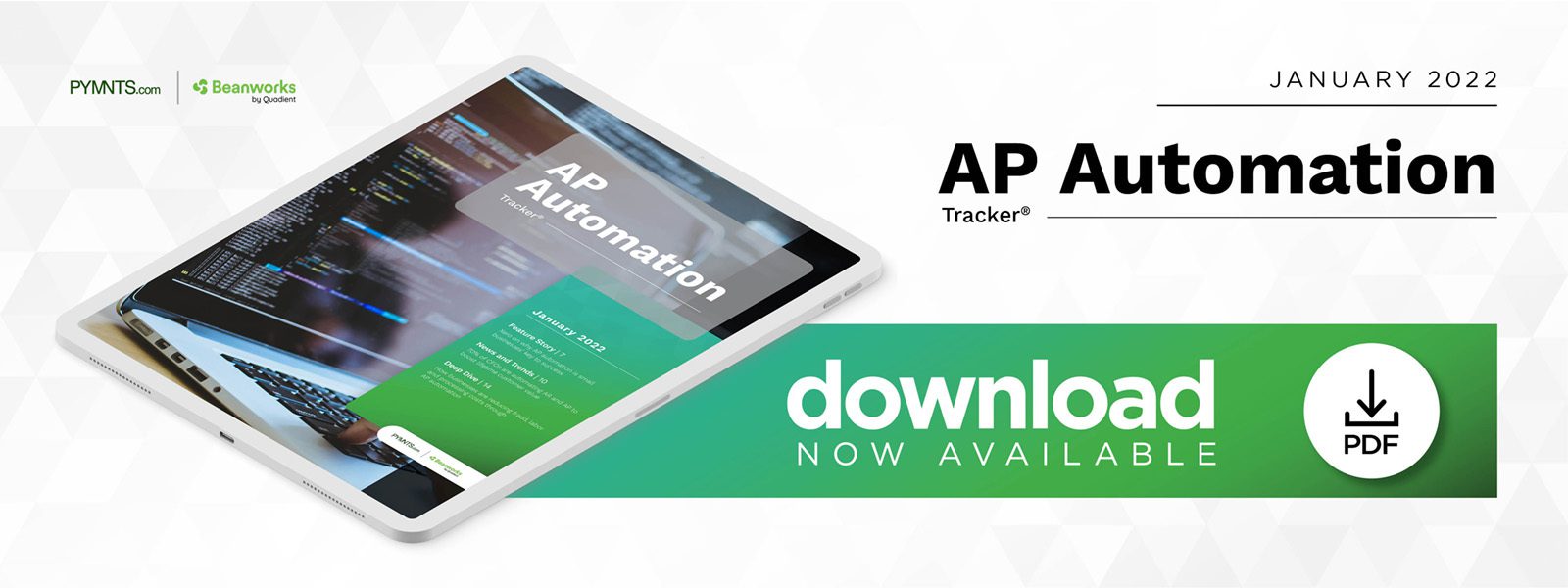Deep Dive: How AP Automation Can Lower Businesses’ Fraud, Processing and Labor Costs

Many businesses digitized their accounts payable (AP) and accounts receivable (AR) operations during the pandemic as manual processes became too difficult or impossible to conduct.
What began as a necessity for survival quickly evolved into a convenient and efficient way to speed up payments and bolster customer relationships. A study found that 94% of U.S. finance workers said AP automation has been essential to navigating the pandemic’s roadblocks.
Digitizing the payments process helps businesses reduce friction, prevent fraud and minimize operational costs, thereby improving customer retention and avoiding supply chain disruptions. PYMNTS data revealed that 74% of chief financial officers (CFOs) at firms with annual revenues between $1.5 billion and $2 billion felt that digitization improved their balance sheets. More than half of CFOs at smaller firms expressed similar sentiments. Payments automation appears increasingly inevitable, yet 89% of small- to medium-sized businesses (SMBs) are still processing invoices using paper-based methods or PDF statements.
The following Deep Dive examines the differences in costs and outcomes for businesses that have implemented AP automation technology versus those still reliant on manual processes. It also explores why CFOs should consider innovation with a sense of urgency, as companies that continue to resist AP and AR automation risk losing revenues to higher labor costs, cyberattacks and customer dissatisfaction.
Manual Invoicing Processes Hinder Remote Work, Fraud Prevention
The pandemic brought about a rapid switch to remote work, and a Gallup analysis predicted that 37% of employees’ desks in business offices will remain vacant indefinitely. Manual processes hindered many workers’ ability to be fully remote, however, as 63% of finance professionals in a study said they had to make office visits during the pandemic for tasks such as obtaining checks or pulling files. The situation improved little over time, with 62% of those employees saying they still faced the same issue. Not surprisingly, 62% of workers also noticed delays in invoice processing, expense reimbursement and vendor payments related to remote work.
The remote work space has also been plagued with fraud concerns throughout the pandemic, and 93% of finance workers said the shift to virtual operations led to a need for tighter cybersecurity procedures in their businesses’ accounting departments. More than three-quarters of respondents said their AP departments received at least one suspicious invoice, and 58% said they fell victim to vendor fraud. Further, 71% of AP professionals said that a lack of visibility into the payments journey left their departments vulnerable to cyberattacks. These problems are rooted in paper-based systems, as human error makes manual processes far more prone to fraud than automated ones. Companies with fully automated AP processes were 63% more likely than average to feel very confident in their fraud prevention. Automation ranked first in ways to improve cybersecurity, with 72% of finance leaders saying it would make their companies less susceptible to ransomware and other attacks.
Despite manual processes’ obvious shortcomings, about 40% of invoices are still paper-based, and the results speak for themselves. A 2020 survey found that 74% of businesses experienced either attempted or successful cyberattacks, with wire transfers accounting for 39% of these strikes and ACH debits making up 34%. Business and commercial credit cards comprised 24% of these attacks, and ACH credit transactions followed at 19%. Business email compromise fraudsters succeeded in attacking 76% of companies in 2020, causing an average loss of $93,000 and a total adjusted loss of $1.8 billion. AP departments were the target of these attacks 61% of the time, making them the Achilles’ heel in their organizations.
Still, 53% of companies that rely on manual processes said they have no plans to innovate, with 38% of that group citing security worries as their reason for forgoing innovation and 31% claiming that their companies are too small to automate. Financial professionals expressed their concerns about this failure, with 44% saying they fear the lack of automation will be harmful to their companies’ futures.
CFOs Favor AP Automation Across the Board

Labor is the most expensive aspect of AP operations. One report estimated that the total processing and labor cost per invoice for AP departments that still use manual processes is $16 for mid-sized companies and $22.26 for small businesses. Having automated systems reduced those costs to $5.89 for mid-sized businesses and $6.89 for small companies, representing a net savings of approximately 60% to 70%. The cost savings before labor are significant as well, with other research estimating a processing cost per invoice of $8.78 for companies using limited or no automation, versus only $1.77 for firms using high levels of automation.
AP automation also helps businesses more accurately balance their incomes and expenditures. More than 95% of CFOs in PYMNTS’ research said AR/AP optimization played a “very” or “extremely” important role in maintaining healthy balance sheets, for example. That share rose to 99% for businesses with annual revenues between $1.5 billion and $2 billion, followed by 96% for those with revenues between $1 billion and $1.5 billion. CFOs of smaller companies agreed, including 93% of those with revenues between $750 million and $1 billion and 94% of those generating $400 million to $750 million annually. It follows that these firms would also recognize automation’s importance, which can help accelerate and streamline inbound and outbound payments flows.
The increasing demand for transparency and greater efficiency is expected to drive the global AP automation market to $2.5 billion this year and approximately $4.5 billion by 2026. To remain competitive in an increasingly digital marketplace, CFOs must consider incorporating automated payment processes into their billing systems or risk losing clients to tech-savvier rivals.
